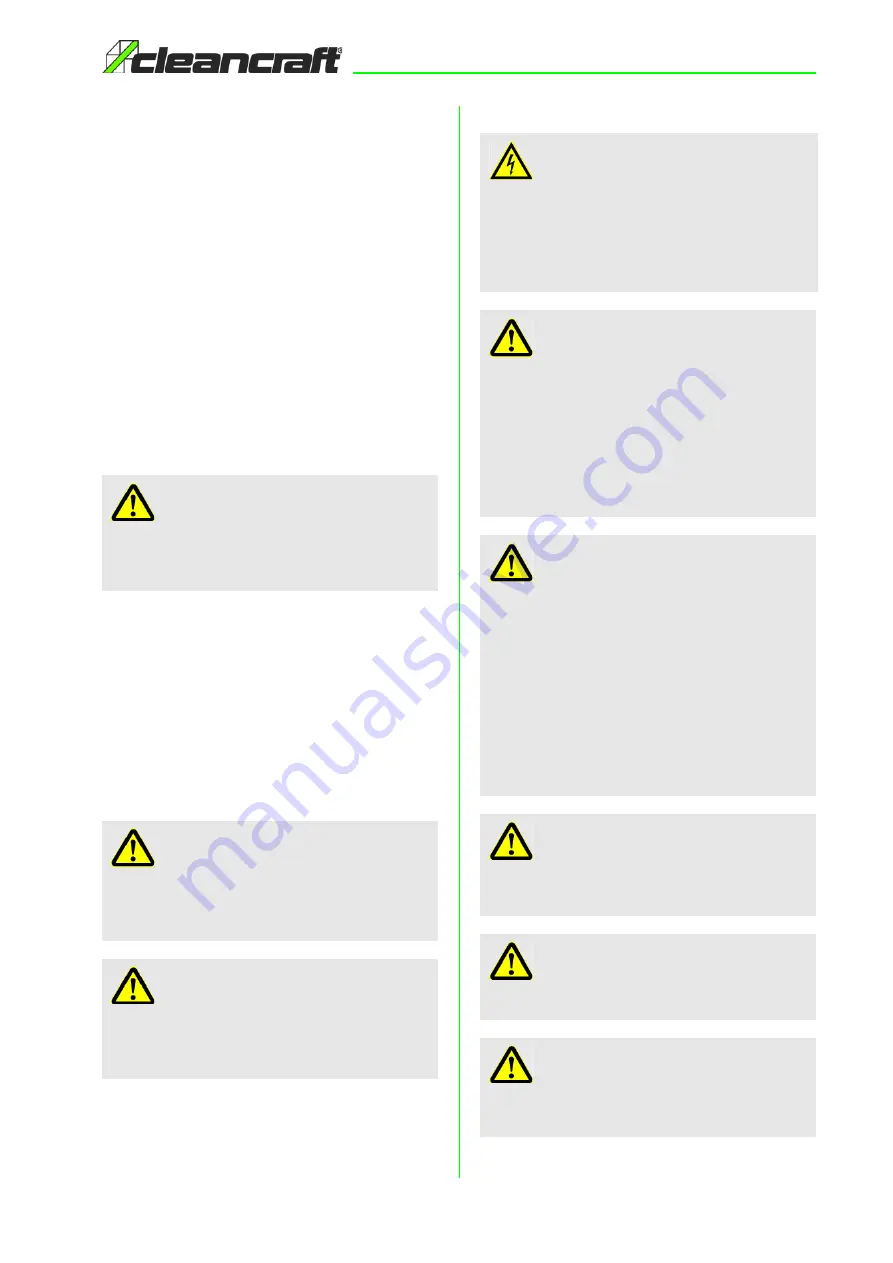
Operation
GP - Series | Version 1.03
13
Step 1: Seal all screwing of the suction hose with thread
tape so that no leaks can occur.
Step 2: Connect the suction line (7, Fig.9) to the pump.
The suction line should have at least an internal
diameter of 25 mm and must be kink-, pressure-
and vacuum-proof. Keep the suction line as short
as possible, as the pump capacity decreases
with increasing length.
Step 3: Mount the suction line (7, Fig. 9) in ascending or
-
der and with at most one bend to the pump to
avoid air bubbles.
Step 4: Place the valve (8, Fig.9) at the end of the suc
-
tion line into the water (about 30 cm from the
floor) and ensure that there is always sufficient
water supply.
Step 5: Install a filter on the inlet line of the pump to pre
-
vent solid particles from getting into the pump.
9.2 Connection of the pressure pipe
The pressure line (4, Fig.9) conveys the liquid to be con
-
veyed from the pump to the sampling point. To avoid
flow losses, we recommend using a pressure line that is
at least the same diameter as the pressure connection of
the pump.
Install the pressure line properly at the pump and at the
respective extraction point.
10 Operation
ATTENTION!
Make sure that there is a sufficient distance (30 cm)
between the inlet pipe and the ground and shores to
prevent damage from the sand or stones being suc-
ked in.
ATTENTION!
The pressure pipe must be installed in such a way
that it cannot exert any mechanical forces or distor-
tions on the pump. All fittings should be sealed with
thread sealing tape.
ATTENTION
Incorrect installation and use of parts that are not
resistant to internal pressure may cause the pres-
sure line to burst during operation. This may cause
injury due to liquid escaping from the line!
DANGER!
Danger to life due to electric shock!
There is danger to life when in contact with live com-
ponents. Switched on electrical components can
cause uncontrolled movements and lead to serious
injuries.
- Disconnect the mains plug before starting any adju
-
stments to the water pump.
ATTENTION!
The device must be correctly installed before use. It
must also be checked that the filter elements are cor
-
rectly installed and powerful.
The device should only be operated, mounted, repai
-
red and transported on firm, level ground.
Make sure that the electrical data indicated on the
engine block match those of the mains to which the
water pump is to be connected, and that the water
pump power plug is plugged into the socket.
ATTENTION!
Always disconnect the power plug from the power
outlet before handling the disconnected water pump.
Always check the supply cable for damage such as
cracks or signs of aging. If necessary, replace the
cable before further use.
The replacement of a defective power cord must be
carried out by the technical service or by qualified
personnel.
When using an extension cord, make sure that it has
the same cable dimension as the pump power cable
and avoid contact of the cables with liquids or co
ductive surfaces.
WARNING!
Before putting the device into operation, make sure
that the voltage stated on the rating plate corre-
sponds to the mains voltage.
WARNING!
Before starting the engine, the pump must be com-
pletely filled with water.
ATTENTION!
Make sure that the pump is properly placed and
ready for use. Check whether all hose connections
are firmly bolted and undamaged.
























